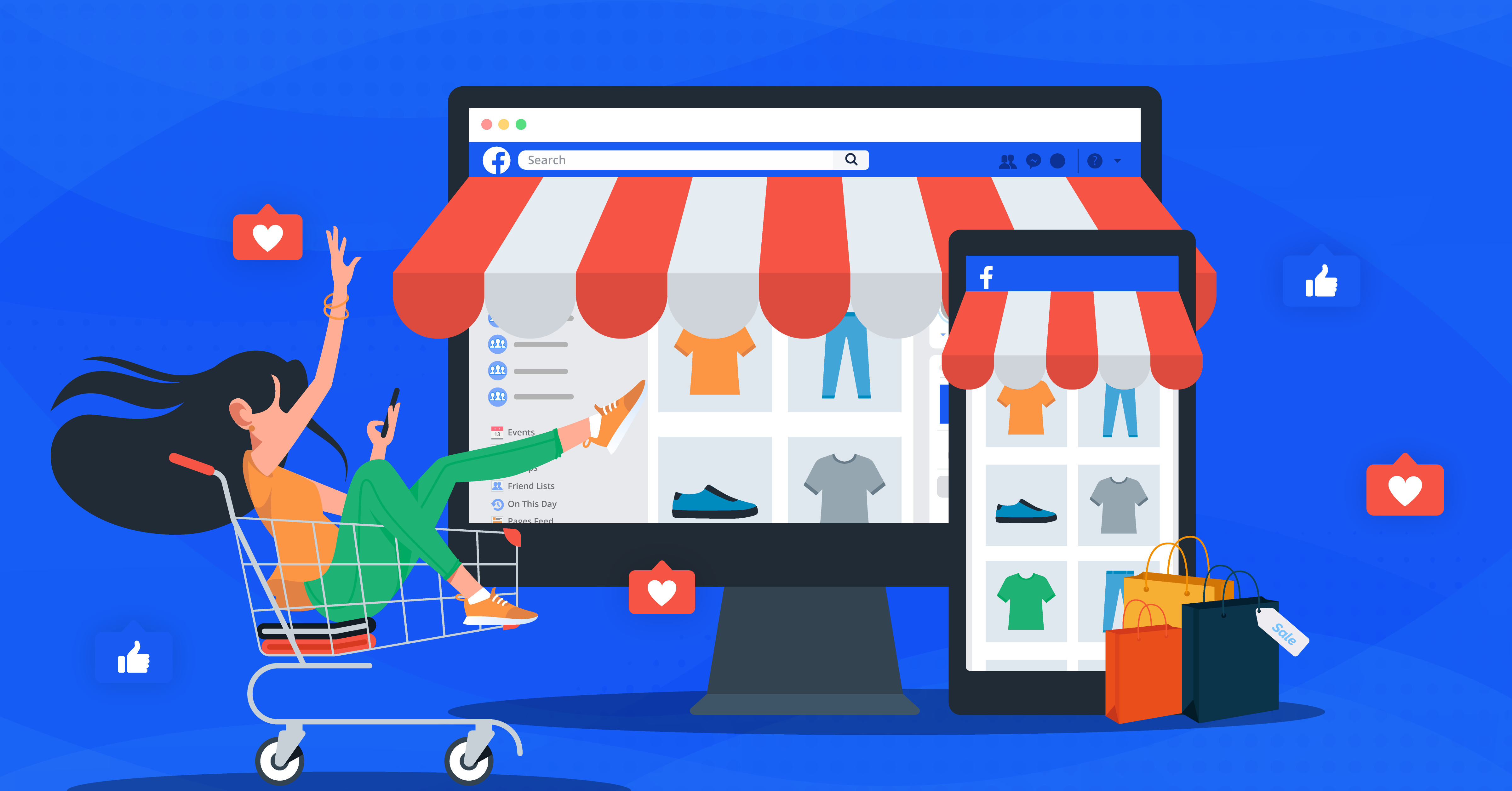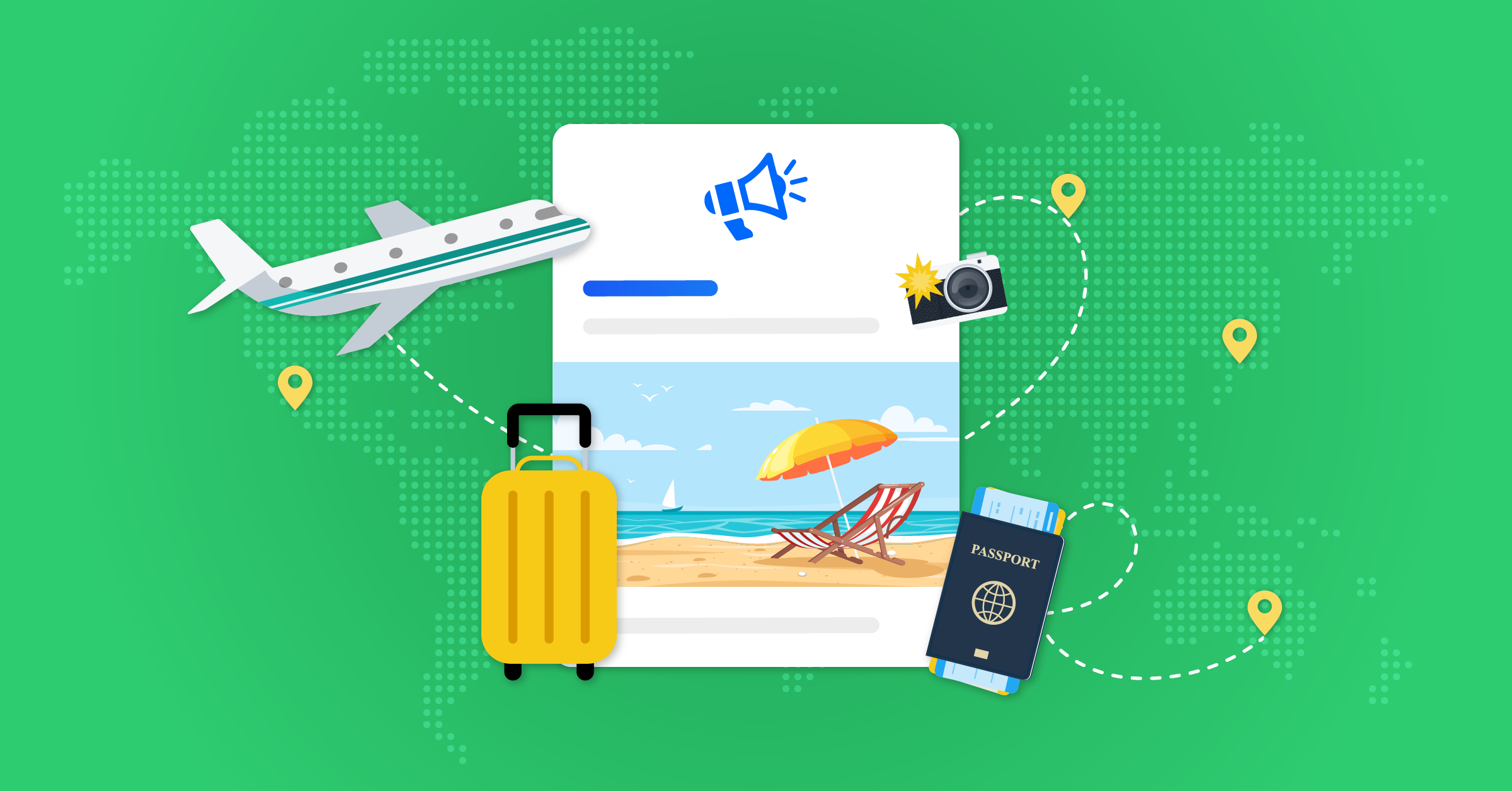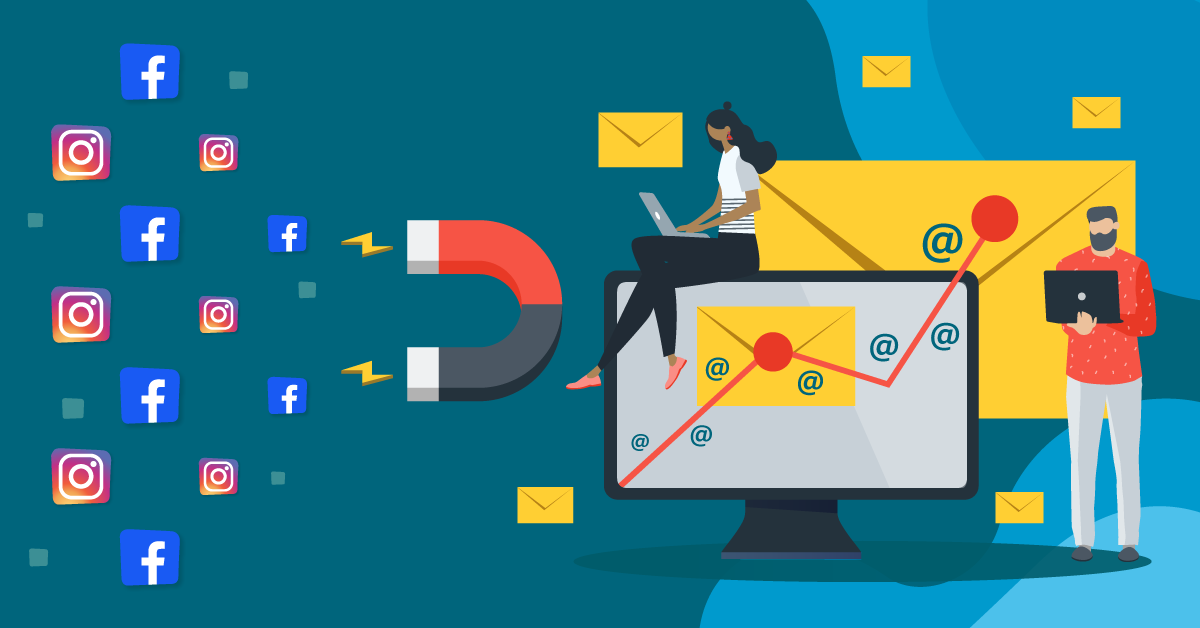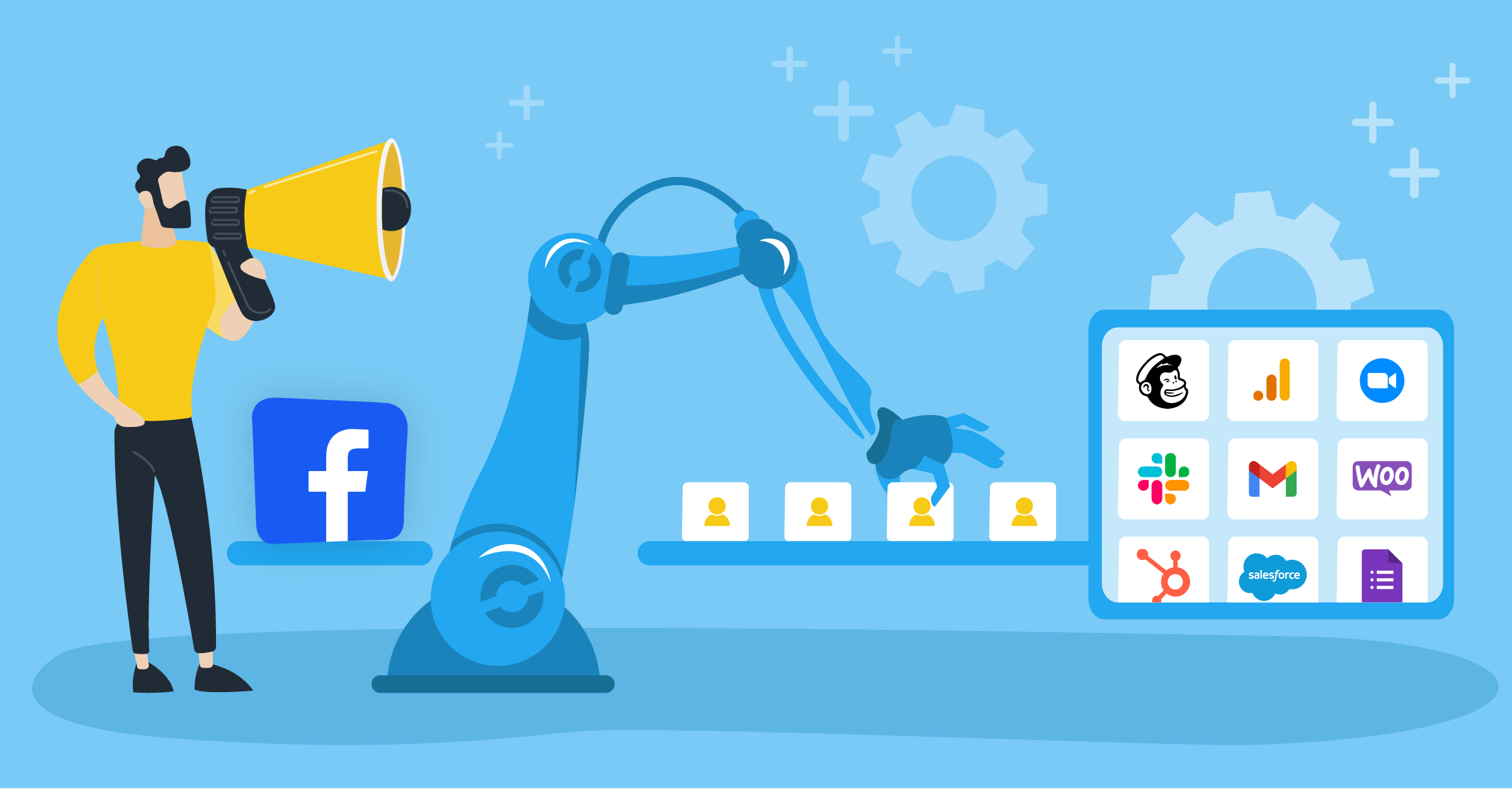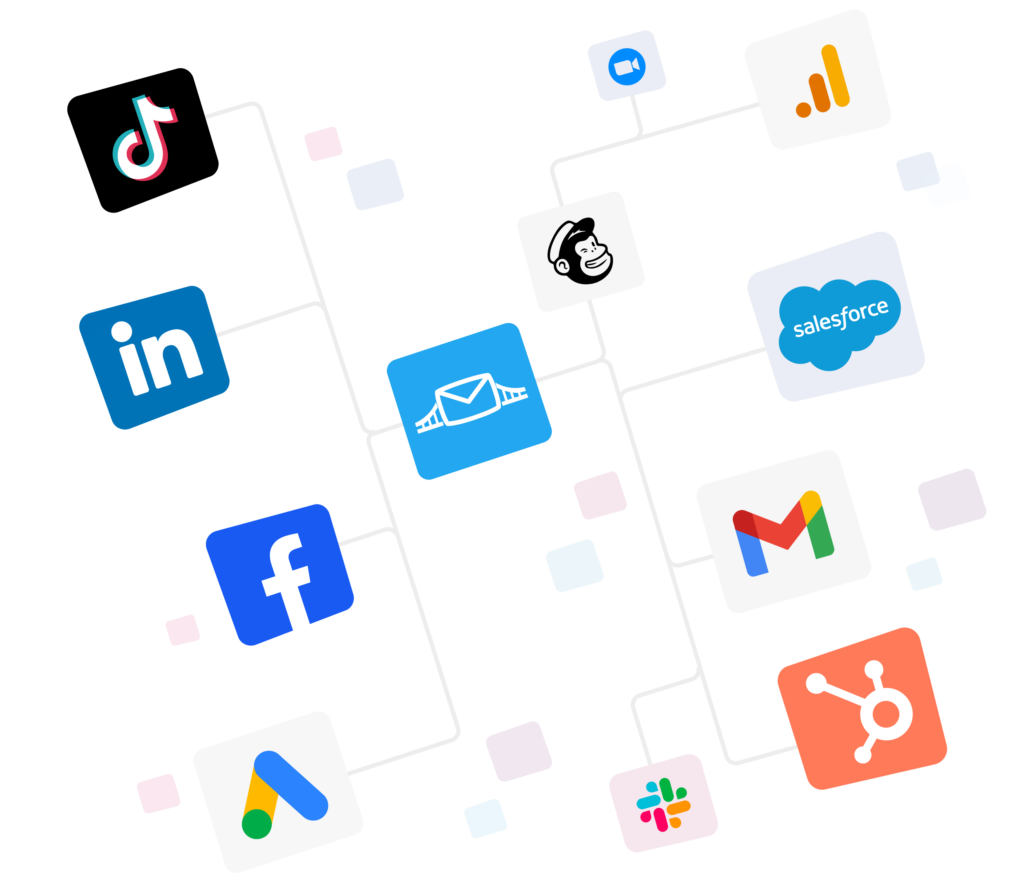
Meta creates technologies that bring people together and support business growth. Meta’s machine learning is already shaping your ads.
But knowing how to leverage its signal marketing tools can give your brand an edge over the competition and boost your return on ad spend (ROAS).
But first, you want to fully understand what lead generation strategies to implement and how to implement them.
So, where do you even start?
The best way to generate leads on Meta (Facebook and Instagram) is probably through lead ads. This is a tool that helps your ads reach the right users and, in the best scenario, convert their interest into action.
- Why you need a Facebook lead generation strategy
- Why am I not getting leads on Facebook Ads?
- How to generate leads on Facebook
- Optimizing your lead capture strategy
- Incorporating lead magnets
- Keeping your landing pages optimized
- Organize your leads with a lead-scoring system
- How to run lead generation ads on Facebook and get results
- 1. Keep your forms simple and easy to complete
- 2. Make your offer irresistible
- 3. Use scroll-stopping creatives
- 4. Install the Meta Pixel for better lead tracking
- 5. Target the right audience (and let Facebook optimize)
- 6. Follow up with leads quickly
- 7. Test, optimize, and refresh your ads regularly
- 8. Retarget and nurture your leads
- How to get more leads on Facebook Ads: Strategies & tips
- Design high-performing lead ads
- Structure ads with engaging content
- Run ads across Meta platforms
- Add an ‘Intro’ section to your lead ads
- Keep your forms simple
- Create a completion screen
- Run A/B tests
- Use Conversion leads performance goal
- Have an audience-targeting strategy
- Use automation to streamline your lead generation
- How LeadsBridge can help automate Facebook lead generation
- How to generate organic leads on Facebook
- How to get better quality leads on Facebook
- Takeaways
In this article, we’ll talk about how to generate leads on Facebook and Instagram, along with the tools and integrations you need to generate and manage your leads as effectively as possible.
Why you need a Facebook lead generation strategy
Consider this: 55.7% of Meta users either follow or research the products and brands they are interested in. A significant portion of these users then go on to click on (an average of) 12 ads every month, which is the reason behind the Facebook ads’ impressive conversion rate of 8.78%.
But what makes these ads so popular?

Lead ads are designed to be user-friendly. If users click on the form, they are shown forms that are pre-populated with their Facebook profile information.
In addition to a frictionless and somewhat personalized experience, these ads are a cost-effective solution for businesses with any budget.
Why am I not getting leads on Facebook Ads?
So you’ve been putting all your efforts into your ad campaigns, with no luck. And now, you’re wondering, why am I not getting leads on Facebook Ads?
The short answer is that your ads across Meta technologies (Facebook and Instagram) might not be optimized. If you want a more detailed answer, we’ll need to see how different elements and aspects of your advertising work together.
1. You might have restricted your budget too much.
Increasing your ad budget, especially in the initial stages, can improve your targeting. This is referred to as Facebook’s learning phase. Injecting a higher budget in the beginning results in faster learning.
2. You might be using an incorrect objective.
Since you want to get leads from Facebook and Instagram, you naturally should choose lead-focused objectives: Lead Generation, Traffic, or Conversion. These objectives need to be selected based on your specific lead generation goals.
3. You might lack audience optimization.
Showing even the most perfect ad to the wrong audience leads nowhere. The best option is to create diverse ad sets with varied audiences for testing. Then, use Campaign Optimization features on your Ad Manager dashboard to allocate the budget to the best-performing Ad Sets.
4. Are your ads creative enough?
Creativity is subjective. Besides, what goes on Facebook is heavily linked to the current trends. To find out what your audience responds to best at this time, create multiple ads with diverse images and copy. Then, analyze their performance and optimize based on what you find out.
5. Does your offer sound appealing?
Your offers should align with both your business goals and your audience’s needs. Here are the three dimensions of a persuasive offer:
- Your business solves a problem;
- Your audience wants the problem solved;
- Your offer connects these two points of interest.
A well-crafted offer can improve your lead generation significantly. So, test out different offers for better optimization.
6. How does your landing page look?
Your landing page should reflect your campaign goals and audience expectations. Experiment with a variety of landing pages and see which one gets you the highest conversion rates.
How to generate leads on Facebook
A reliable method to generate a steady flow of leads for your business is through Meta advertising. Here are some strategies for showing up on people’s feeds and attracting new leads:
Optimizing your lead capture strategy
Lead capture is at the core of any lead generation campaign. However, your campaign should be convincing enough for your audience to trust you with their personal information.
Before you can ask users to submit a form, you’ll need to clearly communicate your value proposition.
Incorporating lead magnets
People expect businesses to offer value before making requests. One of the best ways to generate leads on Facebook and Instagram is to offer something useful to users in exchange for their information.
This could be niche-related eBooks, discount codes, free trials, newsletters, or even webinars.
Not only does this provide value to your users, but also creates engagement while nurturing the audience toward becoming customers.
Keeping your landing pages optimized
Optimized landing pages can increase conversions anywhere from 55 to 202%. What makes a great landing page though?
Landing pages are niche and even product-specific. The best thing you can do is to test different landing pages to see what resonates most with your audiences. This assessment could range from your landing page creatives, copy, visuals, CTAs, and overall architecture.
After optimizing your landing page, go ahead and create a website custom audience. Segmenting these groups helps you run better audience targeting and retargeting campaigns.
Organize your leads with a lead-scoring system
Once your lead generation campaign is up and running, you’ll need a system in place to manage a steady influx of leads efficiently. Lead scoring allows you to quantify interactions by assigning point values for different types of engagement.
This is a way to prioritize leads likely to convert first based on their engagement points and run nurturing campaigns appropriate to each audience group.
How to run lead generation ads on Facebook and get results
Running lead ads that actually hit the target takes more than setting up a campaign and hoping for the best.
Even after achieving your objectives, you want your campaigns to continue to generate results and eventually lower your cost per lead.
Sounds complicated? Below, you can find strategies that help make the process easy through ad performance optimization.
1. Keep your forms simple and easy to complete
Nobody likes a long form that filling it feels like homework. Stick to essential fields like name, email, and phone number.
Asking too many questions upfront increases the risk of users abandoning the form and losing potential leads. The fewer clicks your form takes to complete, the better the conversion rate of your Meta instant form.
2. Make your offer irresistible
People need a reason to give you their information. That’s why you need to make sure your lead magnet is valuable and relevant to your audience.
You may be offering a free guide, a discount, an exclusive webinar, or early access to a product: It needs to be specific. Generic offers won’t just perform as well. Your ad copy also needs to mention what they’ll get and how it benefits them.
3. Use scroll-stopping creatives
Sometimes, all you get is milliseconds before scrolling past. That’s why your ad needs to grab attention instantly. Use bold visuals, clear messaging, and strong CTAs (calls to action) to make your ad stand out.
Video ads tend to perform better for lead generation, perhaps because of their dynamic nature and easy-to-consume information. Consider testing a short video that explains your offer, A/B test the same video, and take it up from there.
4. Install the Meta Pixel for better lead tracking
Do you channel traffic from lead ads to a landing page? Installing a Meta Pixel is a must. This small piece of code tracks user interactions, so you can measure conversions, optimize ads, and retarget visitors who didn’t complete the form.
With the Meta Pixel, you can:
- Track leads who visit your page but don’t sign up
- Retarget warm audiences with follow-up ads
- Optimize ad performance based on real-time actions
However, there’s only so much you can do with Meta Pixel alone. You need to feed the data you collect back to Meta so it can map out your conversions.
Setting up Meta’s Conversions API allows you to tap into valuable data that can make your lead generation ads work even harder.
5. Target the right audience (and let Facebook optimize)
Instead of overloading your campaign with super-specific targeting, try using broad targeting and let Facebook’s algorithm handle the specifics with features like Meta conversion leads performance goal.
Lookalike audiences can also be a great approach. Upload your current customer list, and Facebook will find similar users who are likely to convert.
Once your campaigns have been running for some time, you have enough data to create highly targeted audience segments.
Here’s how to build a successful lead generation campaign.
6. Follow up with leads quickly
The longer you wait to reach out, the colder the lead becomes. Integrate your CRM with Facebook lead ads to automatically sync leads and trigger immediate follow-ups. This could be an email sequence, a phone call, or a text message. Getting up to speed without automation is almost impossible.
Here are some of our popular integration that allow you to make your follow up campaign speedy and efficient:
7. Test, optimize, and refresh your ads regularly
Even if your lead ads are performing well, don’t set them and forget them. You want to monitor your performance, A/B test different creatives and refresh your ads to avoid ad fatigue. Watch key metrics like cost per lead (CPL) and conversion rate to make sure your campaign stays profitable.
8. Retarget and nurture your leads
Not every lead will convert right away, and that’s okay. Use retargeting ads to stay top-of-mind and nurture leads with valuable content until they’re ready to take action.
Running a follow-up campaign with special offers or testimonials can help push hesitant leads over the finish line.
How to get more leads on Facebook Ads: Strategies & tips

Design high-performing lead ads
Meta lead ads (including Facebook and Instagram lead ads) are designed for a single purpose, and that’s lead generation. They are easy to build and use, but optimization is what affects how well they perform.
For instance, using the right CTA button and optimized landing pages can convert more leads. Facebook offers an array of creatives and formats for granular optimization and to meet different business objectives.
Structure ads with engaging content
Here is what a well-performing ad structure looks like:
- Includes compelling images or videos.
- Has a clear call to action (CTA) to prompt clicks.
- Clearly communicates the value of filling out the form.
Not sure if your ad is up to the standard? Learn more about the anatomy of a Facebook Ad here.
Run ads across Meta platforms
Wondering how to get more leads? Consider a multichannel approach.
You can run ad campaigns on both Facebook and Instagram while building your campaigns on Meta Ads Manager. Using automatic placements lets you improve your campaign’s targeting and reach.

Add an ‘Intro’ section to your lead ads
The Intro section is where you can provide relevant information about your brand. Here, you can communicate your business details, describe your products or services, and mention what users can expect in return. This lets you establish trust and authenticity.
Keep your forms simple
Simple and short instant forms have a higher chance of getting filled. So, ask as few questions as necessary. Also, make sure your form questions are aligned with the campaign goal.
Create a completion screen
Lead ads allow you to customize the completion screen in order to communicate what comes next while encouraging further actions. This is to prompt users to take additional steps after form submission.
Run A/B tests
A/B tests let you measure every aspect of your campaign. You could test and measure based on completion rates, costs, the copy, and even the length of your forms.

Use Conversion leads performance goal
Targeting users with a high likelihood of conversion is one of the must-have strategies in your lead generation toolkit.
The Conversion leads performance goal simplifies the conversion process by focusing on potential customers. This implementation also gives a whole set of valuable data insights to continually improve your lead generation while ensuring your marketing dollars are channeled toward the right ad viewers.
Pro tip: It’s best to begin optimizing for conversions after your lead ad campaign is active, and you’ve gained a clear insight into the characteristics of your most valuable audience.
Have an audience-targeting strategy
Refining your audience segments and creating lookalike audiences can improve your targeting significantly. To reach people likely to be interested in your offerings, you’ll need to implement custom audiences. That’s where you need to use automation.
The integrations connect your CRM to Facebook or Instagram in order to base your audience targeting on the characteristics of your existing customers.
Use automation to streamline your lead generation
Highly-targeted campaigns call for more than manual data processing. You can create automated data bridges between Facebook or Instagram and your CRM for efficient lead management and lead targeting.
How LeadsBridge can help automate Facebook lead generation
Your business needs a constant stream of incoming prospects to grow. And to do that, you’ll need to increase your conversion rate and revenue. Juggling a bunch of leads from various campaigns can be a challenge. And the last thing you want is to mix up messages or let a hot prospect slip through the cracks.

Lead automation helps you keep all your leads in line and in one spot by connecting Facebook or Instagram to your favorite marketing platforms.
Streamlining this process also means that you no longer need to manually download your leads from Facebook.
LeadsBridge lets you create an interconnected system that keeps tabs on your customers’ every click and conversion. Moreover, you can tailor personalized experiences for your incoming leads and keep them engaged throughout their journey as customers.
Here are the top advantages of creating codeless integrations through LeadsBridge:
- Automated data sync: LeadsBridge synchronizes lead data across platforms for real-time updates.
- CRM integration: It seamlessly integrates with CRM systems for efficient lead management.
- Automated follow-up: You can create automated workflows for timely lead engagement.
- Multi-channel integration: This lets you expand lead generation efforts beyond Meta technologies (Facebook and Instagram) to multiple channels.
- Advanced targeting: Automated data bridges help build precise targeting segments for audience specificity.
- Lead ad optimization: Streamlining the process also improves campaign performance.
Explore some of the top Facebook Ad integrations here.
How to generate organic leads on Facebook
Organic lead generation on Facebook and Instagram happens when you use the right tools to target the right audience with the right ad copies and creatives. You need to first make sure your lead ad forms are set to “Open” in the Sharing section of your Form Configuration.
This lets users share your ads, which is another way of reaching a wider audience. Also, you can encourage your audience to tag friends or share your content to increase organic reach.
Remember, organic leads are included in your file download from Meta Business Suite, but not in the Meta Ads Manager results.
Wondering how to generate leads on Facebook organically? Learn more about it here.
Factors to consider when generating leads on Facebook
Having an effective lead capture strategy
Make sure your audience knows what they’re signing up for and why it’s worth it. Highlight what makes your business, products, or services special enough for them to share their email address.
Use lead magnets
Offer something valuable in return for their (valuable) information. This could be an ebook, discount code, free trial, newsletter, or even a webinar. Show the benefits of your offer in your ad to attract more leads.
Optimize your landing page
The average conversion rate for landing pages is about 26%. That’s why optimizing your landing pages can help boost conversions. Additionally, use the user journey data from your landing pages to create better campaigns.
For instance, test different pages to see which performs best and set up a custom audience for retargeting those who don’t convert right away.
Have a lead scoring system
Lead scoring tools can be incredibly helpful. They automate the lead scoring process while providing you with accurate and actionable data.
All you have to do is connect your lead scoring app (like Salesforce®, ActiveCampaign, and HubSpot) to Facebook using automated data bridges. You can then score your leads as they come in and move through the funnel.
This process is basically about assigning points to different interactions, like downloading a white paper. Using automated integrations help you effectively focus on the leads most likely to convert first.
How to get better quality leads on Facebook
There’s a massive difference between getting leads and getting the right leads. You want to filter out low-intent leads, attract more serious prospects, and ultimately increase your conversion rates.
The idea is to channel your marketing focus on quality leads. Instead of reaching more people, target leads with a higher interest in your offering, even if this means targeting fewer people.
Here’s how you can attract high-quality leads that are more likely to convert:
1. Optimize for “Higher Intent” leads
Are you getting too many unqualified leads? Switch your lead ads’ setting to “Higher Intent” to add an extra confirmation step. This will naturally cut down the number of form submissions you receive. But, it increases your lead quality.
2. Use stronger audience targeting
How do you ensure your ads reach the right people? Casting a wide net will gather all types of fish. You want to refine your targeting to catch only what you want in your basket.
Instead of targeting broad groups, use audience segments based on your best existing customers. You should also exclude past leads who have already signed up to avoid wasted ad spend and focus only on fresh prospects.
3. Ask qualifying questions in your forms
Not sure if leads are serious? Adding a couple of simple questions (e.g., “Are you ready to buy?” or “What’s your budget?”) filters out uninterested users and helps your sales team focus on the hottest leads.
4. Craft a value-driven offer
What makes someone want to give you their contact info? Make sure your lead magnet (whether it’s a free resource, discount, or consultation) is highly relevant and appeals directly to your audience’s needs.
Takeaways
Generating leads on Facebook is often highly rewarding, thanks to its massive user base. To truly make it work, however, you should have a full-funnel Meta ad strategy in place.
Don’t expect cold audiences to jump straight into filling out lead forms; they require a warm-up phase and an introduction period before they’re ready to engage. Then, there’s campaign creation and optimization.
The good news is that you can boost your performance even more. Once you’ve got the right integrations, the rest of the journey tends to be smooth sailing.
Check out all the possible integration with Facebook and streamline your Facebook advertising today.




















